| January 11,
1860 |
Alabama Democratic Party adopts the
Alabama Platform. |
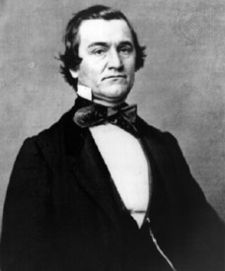
|
William
Lowndes Yancey
|
|
| February 27,
1860 |
Abraham Lincoln addresses gathering at
the Cooper Union
in New York City. |
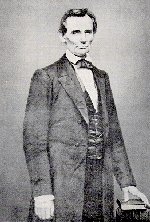 |
Abraham
Lincoln
|
|
| March 6,
1860 |
Lincoln gives speech in New Haven, Connecticut. |
 |
Abraham
Lincoln
|
|
| April 23,
1860 |
Democratic
Convention opens in Charleston, SC. |
|
| April 28,
1860 |
Yancey addresses the convention regarding the dispute over the platform.
|

|
William
Lowndes Yancey
|
|
| April 30,
1860 |
The convention adopts the minority (pro-Douglas) report of the platform committee, which infuriates the more extreme Southern delegates. In response, seven entire delegations (and portions of two others) from slave-holding states walk out of the Convention. |
|
| May 3, 1860 |
Democratic
Convention adjourns after 57 ballots. Sen. Stephen A. Douglas of
Illinois is the clear leader for the nomination, but he is over 50
votes short of the necessary two-thirds majority to achieve the
nomination, because the Southern delegations have withdrawn over the slavery-in-the-territories plank in the platform. |
|
| May 9, 1860 |
Constitutional
Union Party nominates John Bell of Tennessee for
the Presidency. |
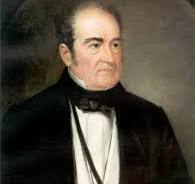
|
John Bell
|
|
| May 18, 1860 |
Republican Party nominates Abraham Lincoln for the
Presidency. |
 |
Abraham
Lincoln
|
|
| June 18,
1860 |
Democrats
reconvene in Baltimore, Maryland. |
|
| June 22,
1860 |
Southern
delegates again withdraw from the Democratic Convention. |
|
| June 23,
1860 |
"Regular"
Democrats nominate Stephen A. Douglas; the "Southern" wing of the party, consisting mostly of the delegates who walked out the day before, meet and nominate Vice President John C.
Breckinridge of Kentucky.
|
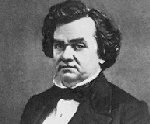
|
Stephen A. Douglas
|
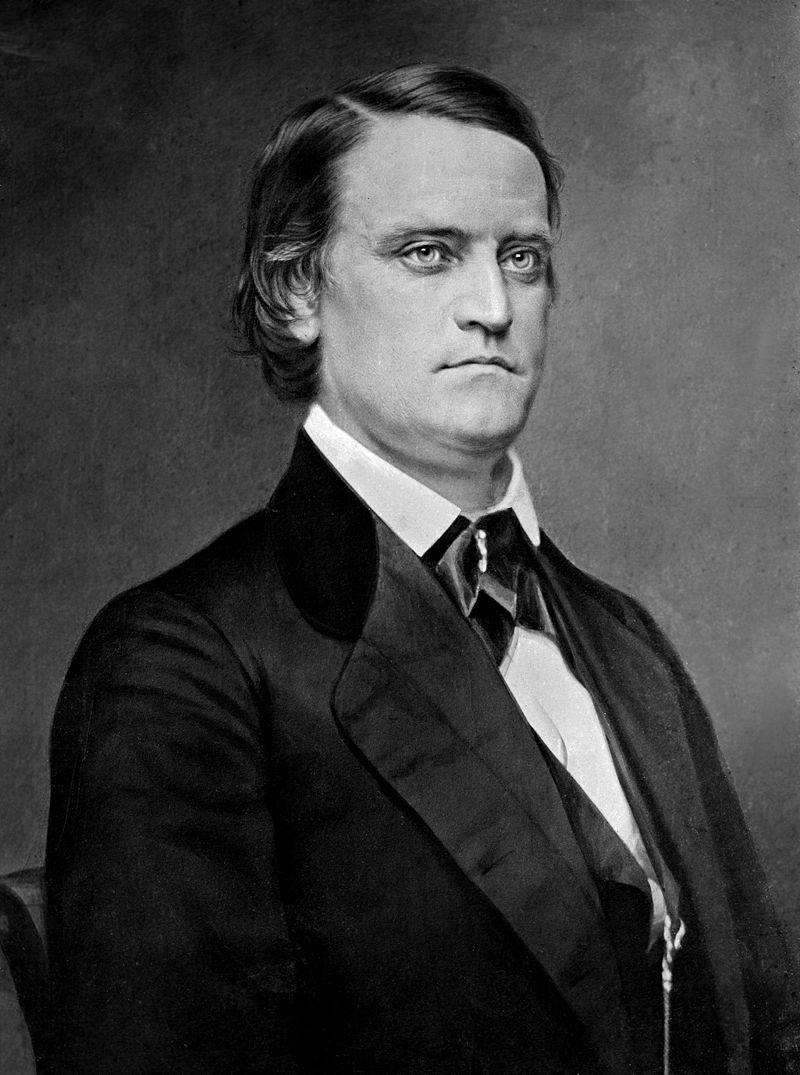
|
John C. Breckinridge
|
|
| November 6,
1860 |
Lincoln
defeats Douglas, Breckinridge, and Bell for the Presidency. |
|
| November 14,
1860 |
Alexander Stephens addresses the Georiga
legislature on secession. |
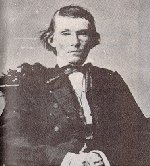
|
Alexander H. Stephens
|
|
| November 30,
1860 |
Mississippi legislature passes
resolutions
in favor of secession. |
|
| December 18,
1860 |
Crittenden
Compromise introduced in Congress. |
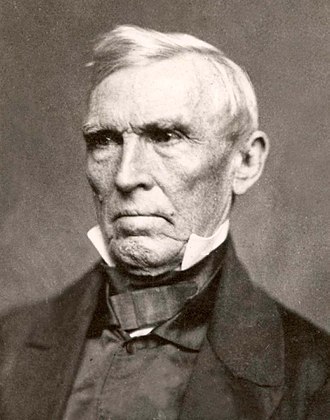
|
Sen. John C. Crittenden
|
|
| December 20,
1860 |
South
Carolina convention passes ordinance of seccession.
Secretary of War Floyd
orders 125 heavy cannon
to be shipped from Pittsburgh to incomplete fortifications in the Deep
South.
|
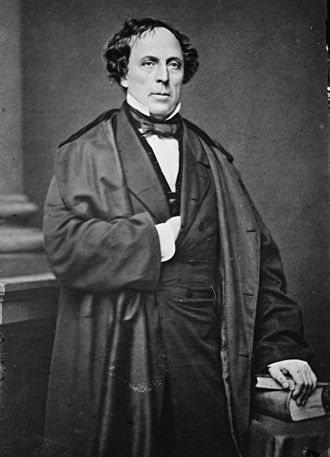
|
Secretary of War John B. Floyd
|
|
| December 24,
1860 |
Mississippi
Senator Jefferson Davis introduces a "compromise"
proposal which would effectively make slavery a
national instituion. |
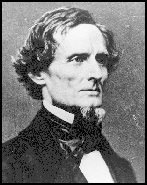
|
Sen. Jefferson Davis
|
|
| December 26,
1860 |
Major
Anderson moves Federal garrison in Charleston, SC, from Fort Moultrie
to Fort Sumter. |
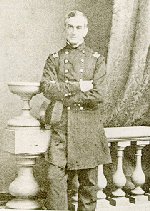
|
| Maj. Robert Anderson (as a
general during the Civil War) |
|
| December 31,
1860 |
Postmaster-General Joseph Holt named Secretary
of War, replacing Floyd.
President
Buchanan refuses to order Maj. Anderson back to Fort Moultrie, and
instead issues orders to send reinforcements and provisions to him at
Fort Sumter.
|
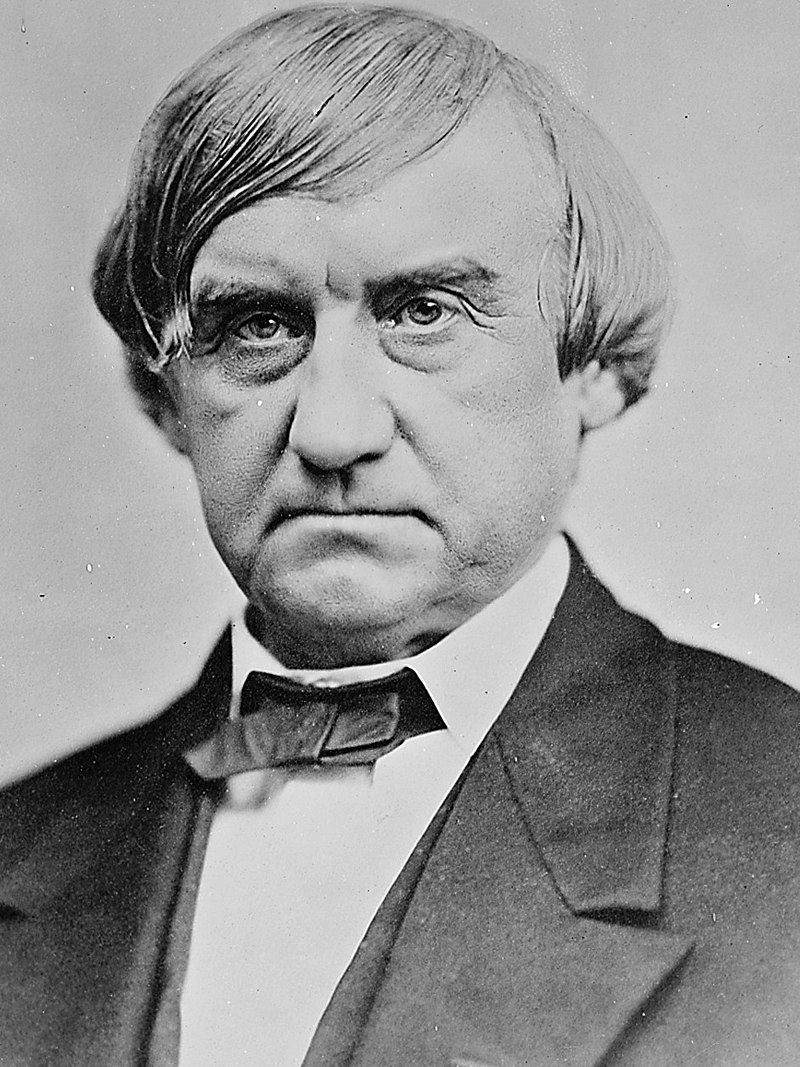
|
Secretary of War Joseph Holt
|
|
| January 3,
1861 |
Georgia seizes Fort
Pulaski. |
|
| January 4,
1861 |
Alabama seizes U.S.
arsenal at Mount Vernon. |
|
| January 5,
1861 |
Alabama seizes Forts
Morgan and Gaines. |
|
| January 6,
1861 |
Florida seizes Apalachicola
arsenal. |
|
| January 7,
1861 |
Florida seizes Fort
Marion. |
|
| January 8,
1861 |
Floridians try to seize Fort
Barrancas but are chased off. |
|
| January 9,
1861 |
Mississippi
secedes.
Star of the West fired on in Charleston Harbor as she was trying to land reinforcements for the Fort Sumter garrison.
|
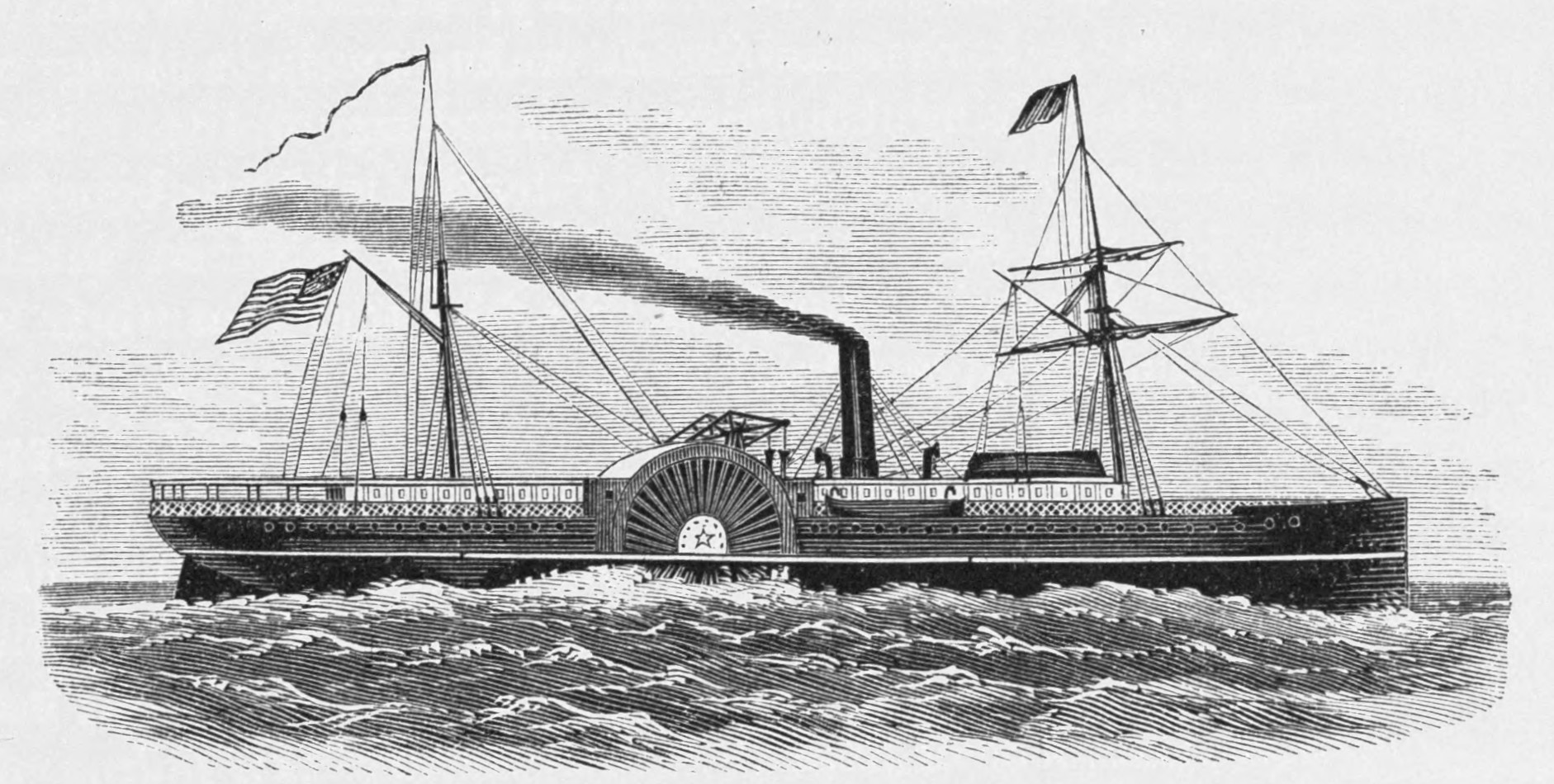
|
Star of the West
|
|
| January 10,
1861 |
Florida
secedes.
Louisiana seizes U.S.
arsenal at Baton Rouge, as well as Forts Jackson and St. Philip.
|
|
| January 11,
1861 |
Alabama
secedes.
Louisiana seizes U.S.
Marine Hospital.
|
|
| January 14,
1861 |
Louisiana seizes Fort
Pike. |
|
| January 19,
1861 |
Georgia
secedes. |
|
| January 26,
1861 |
Louisiana
secedes. |
|
| January 28,
1861 |
Tennessee
Resolutions in favor of Crittenden Compromise
offered in Congress. |
|
| February 1,
1861 |
Texas
secedes. |
|
| February 8,
1861 |
Provisional
Constitution of the Confederacy adopted in Montgomery, AL.
Arkansas seizes U.S.
Arsenal at Little Rock.
|
|
| February
9, 1861 |
The U.S.S. Brooklyn
arrives at Fort Pickens, off of Pensacola, Florida, carrying
reinforcements. |

|
USS Brooklyn
|
|
| February 12,
1861 |
Arkansas seizes U.S.
ordnance stores at Napoleon. |
|
| February 18,
1861 |
Jefferson
Davis inaugurated as President of the Confederacy. |

|
Confederate President Jefferson Davis
|
|
| March 4,
1861 |
Abraham
Lincoln inaugurated as 16th President of the United States. |
 |
President Abraham Lincoln
|
|
| March 20,
1861 |
Arkansas Secession Convention passes resolutions largely in favor of secession.
|
|
| March 21,
1861 |
"Cornerstone
speech" delivered
by Confederate Vice-President Alexander Stephens. |

|
Confederate Vice-President Alexander H. Stephens
|
|
| April 12,
1861 |
Fort Sumter fired upon by Confederates. |
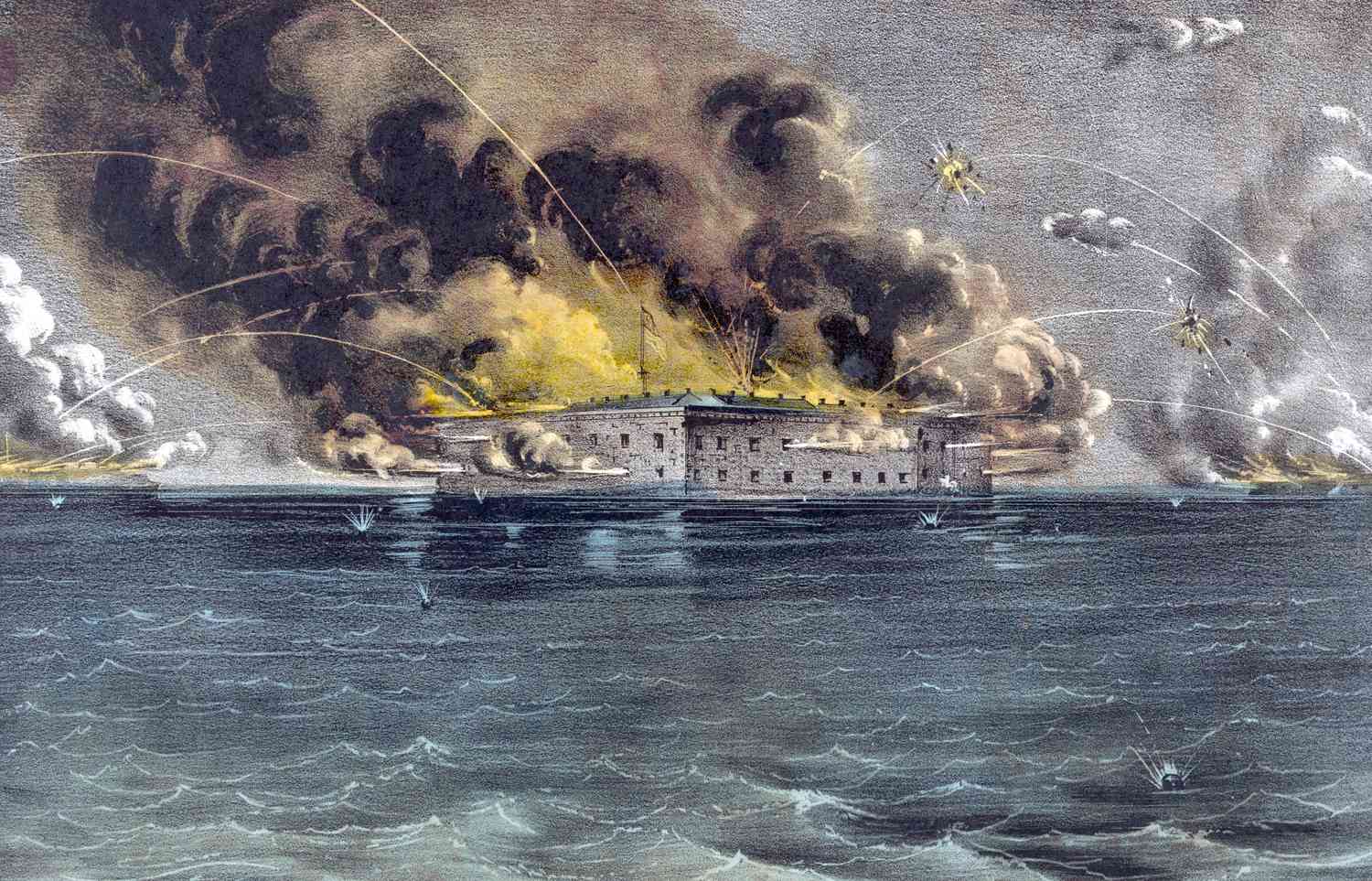
|
Fort Sumter under fire
|
|
| April 17,
1861
|
Virginia secedes, subject to a referendum to be held on May 23.
|
|
| May 6, 1861 |
Arkansas secedes. |
|
May 20, 1861
|
North Carolina secedes.
|
|
| May 23, 1861
|
Virginia's referendum on secession passes, 126,000--20,400.
|
|
| June 8, 1861
|
Tennessee secedes.
|
|



















